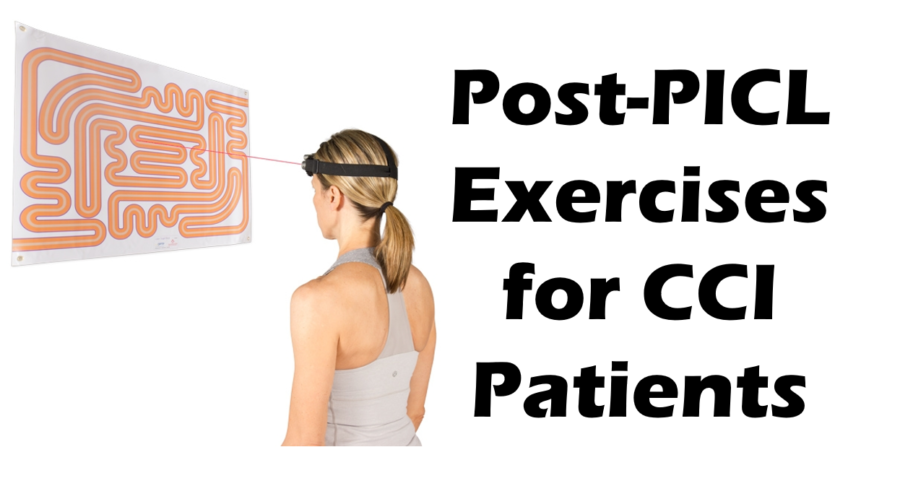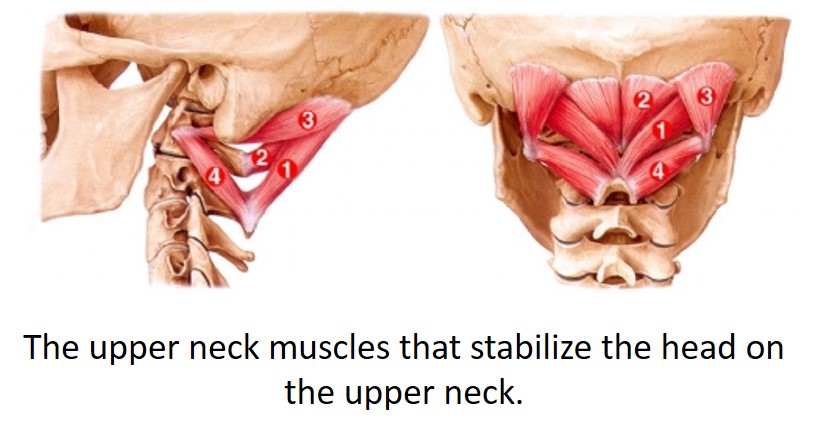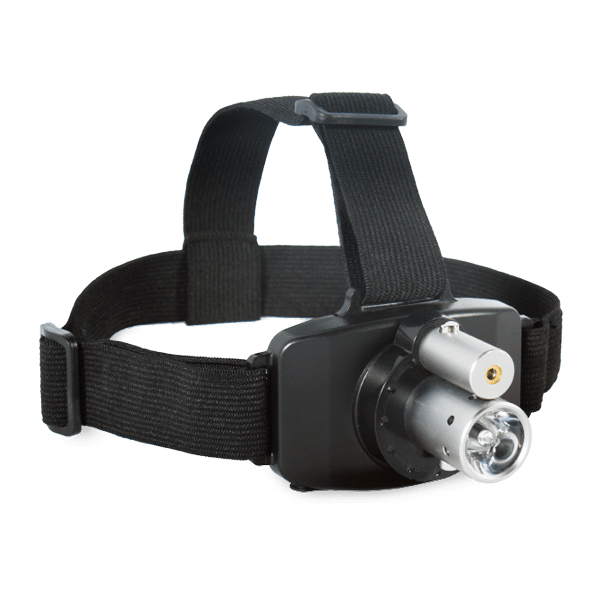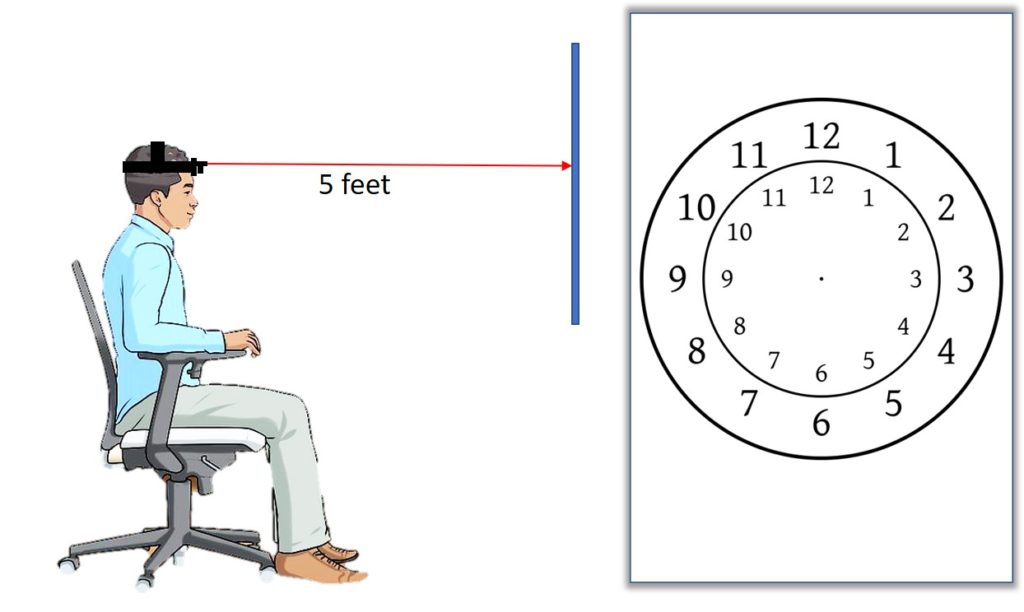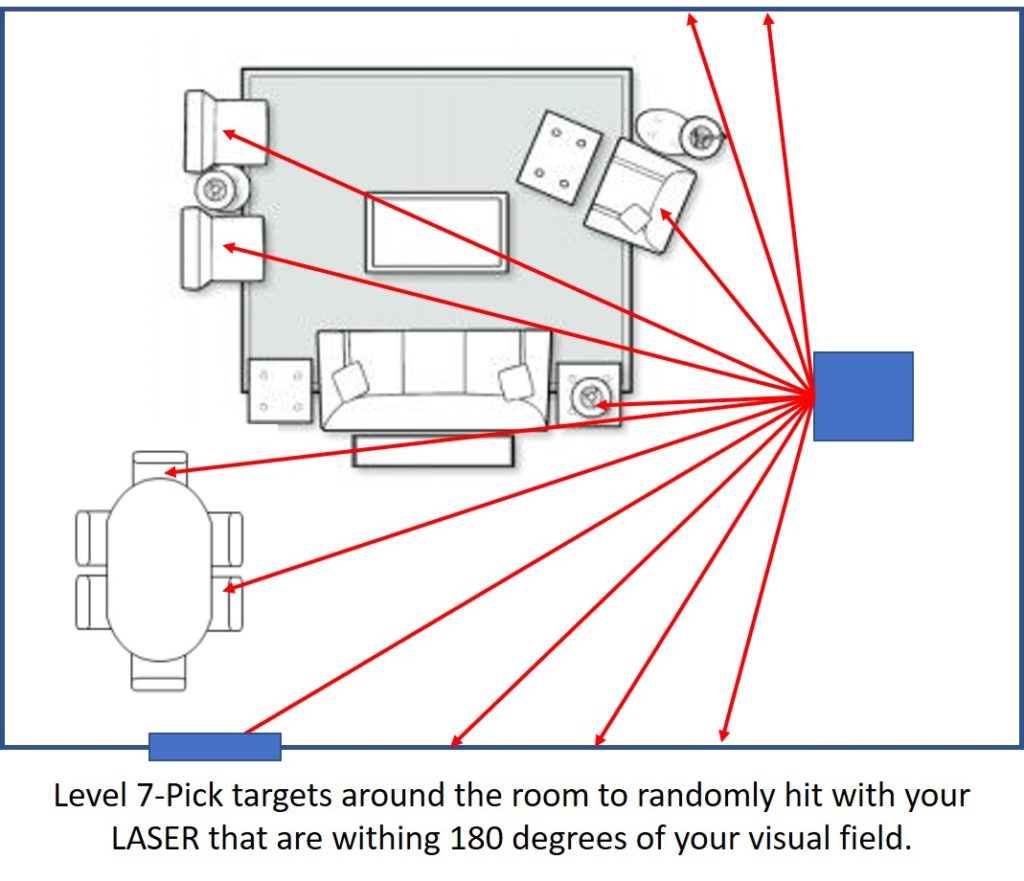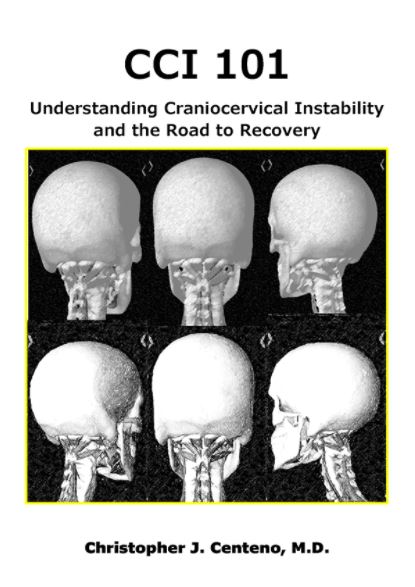One of the more common questions I get from patients who undergo the PICL procedure is what does the physical therapy or rehab program look like after the procedure. Hence, I thought I would dive deep into a program that anyone can do at home or provide a physical therapist so they know what CCI exercises we want. Let’s begin.
[Note, we have 4 blogs in the CCI series, but I decided to link these to a series of podcasts which include an extra episode 1, so this is now episode 5 of the blog to match the podcasts.}
What is the PICL Procedure?
This is our novel procedure where we inject bone marrow concentrate (a same-day stem cell procedure) into the ligaments that hold the head on (alar, transverse, accessory, and many others). The goal is to strengthen damaged or lax ligaments in patients with Craniocervical Instability (CCI). For more information, see my video below:
Why Do You Need to Rehab if You Have CCI? What do CCI Exercises Look Like?
Stability has two major components: ligaments and muscles. Ligaments check joints from moving too much. Many CCI patients have loose ligaments due to damage or laxity and these allow too much upper neck joint movement (typically at C1-C2 and/or C0-C1). However, what’s talked about less often is that the upper neck muscles that stabilize the head on the neck also become small and weak (aka atrophied). These muscles are shown to the left. So in order to get the most out of the CCI procedure, you have to begin strengthening these muscles that haven’t worked well in months or years. The main concept is that you’ll be able to do more as you become more stable.
Another strategy for higher functioning CCI patients is trying this program before the procedure. While many CCI patients can’t tolerate any physical therapy exercises, some can. However, in this case, be very cautious and go very slowly. If you find you can’t tolerate these exercises before the procedure, then don’t despair, most patients can do them once the ligaments are tightened down by the procedure.
Level 0
A critical first step BEFORE you start any rehab program is to determine if you’re ready to start at all. That’s a big deal for CCI patients, as without some ligament stability this program won’t be effective. While most patients would start this program several months after the first or second treatment has begun, some may be able to start early. Either way, you need to answer “No” to all of these questions if you’re going to begin this program:
- Do simple head movements throw your upper neck “Out” or cause severe symptoms? Y/N
- Does performing simple tasks like reaching for something or typing sometimes throw your upper neck “out” or cause severe symptoms? Y/N
- If you use an upper cervical chiropractor, do your adjustments hold for less than just a few days? Y/N
If you have any confusion about whether it’s time to start, talk to your doctor. When I refer to being “out” or a flare-up throughout this document, this means that your symptoms get worse due to the activity. For most CCI patients that would be headaches, dizziness, visual disturbances, rapid heart rate/anxiety (vagal nerve related symptoms), or neck pain.
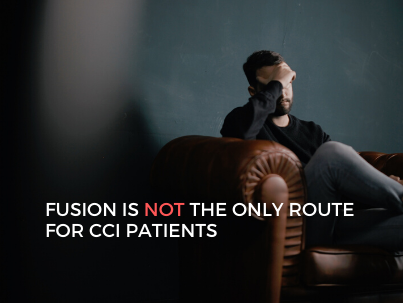
Adjunct Therapies
If you work with an upper cervical chiropractor and this type of treatment helps, then you should continue adjustments after the PICL procedure and especially during this rehab program. While I have set this program up as something you can do at home as finding a physical therapist with CCI experience is difficult, if you have a physical therapist who has helped, then please provide him or her with this web page so they can see what we want post-procedure. Also, curve restoration therapies (aka chiropractic biophysics) may or may not be recommended for you, but can be continued during this program. In addition, any activities that cause you reliably to “go out” or significantly flare your symptoms should be avoided. Meaning, no pain no gain does not apply here.
In particular, depending on how much ligament stability you’ve gained through PICL and/or how much muscle atrophy you have as well as other things (whether irritated nerves or joints are involved), you may move this program more or less slowly than I have described. That’s OK. If it takes you 2-3 times as long, that’s fine. Similarly, if you can move through it quickly without flare-ups, then that’s great. Again, LISTEN TO YOUR BODY! In addition, if you can’t do it at all, don’t worry. You may just need more ligament tightening through another PICL procedure before this program is right for you.
One word of caution. This rehab program is NOT for patients who have already had an upper neck fusion for CCI. It should only be attempted upon the advice of your treating physician.
Level 0.25 – Getting the Right Equipment for Your Craniocervical Instability Exercises
To do these exercises, you need a LASER headlamp system. There are a few different options from low budget to medium. This is a LASER pointer that sits on top or on the front of your head while you look at where the LASER is pointing. You will use this rig to begin to get position sense and strength back in the upper neck muscles.
Medium Price
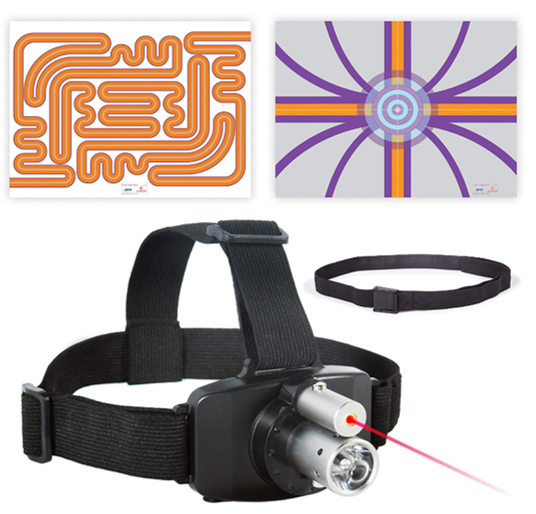
The SenMorCor system is a headlamp and wall target system that comes ready to use out of the box. It looks like this (click on the picture to the left for an Amazon link). You put that black strap device on your head with the LASER pointing forward. You then place one of the posters on the wall and use your head movements to hit various targets. The farther you are from the wall, the smaller and more fine-grained the movements. If you’re closer, then the movements of your head required will be bigger. This rig and wall posters run just over a hundred USD. More links to buy this system:
Lower Price
I found this system on Amazon which is only 20 bucks and looks like a knock off of the SenMoCor device (click on the picture to the right to be taken to Amazon). Some physical therapists who left reviews said it worked fine. You can also buy a wall target like this one on Amazon. You can also easily make your own as shown below, which will be required for the lower levels of this rehab program.
Level 1-Small Clock Number Movements
Now that you have your LASER pointer headpiece, find a dimly lit room. There are two options for making your exercise targets. So let’s dig in.
The cheapest way to do this is to get a 36 X 48-inch white poster board (not glossy, but matte) and a black magic marker of this clock. Draw two clock faces as shown to the left (click on the picture to see a bigger image). This is two concentric clock faces and the larger one should fill the whole width of the poster (36 inches). The smaller clock should be 24 inches wide (diameter). There should be a point in the middle of the circles. You can use bowls to draw the circles or a pin with string in the middle point and attach that to the marker while drawing a circle at that set length. Alternatively, I have designed a PDF file that you can upload to a local or online printing service. I got it printed for $25 at VistaPrint on a matte 36X48 poster. You can use any other service including your local print shop like Kinkos or office supply store (Staples and Office Depot have services). The nice part about uploading the PDF online and picking up the print is that you can save on the $9 shipping fee that Vistaprint charged.
Place the poster on the wall and get a comfortable chair. You will be measuring the distance from the wall to the headpiece and placing some pieces of tape on the floor to ensure that you know where the chair should be.
Now that you have the equipment, it’s time to set-up your level 1 exercise area. Place the chair 5 feet back from the wall (this distance is from your head to the wall). Get yourself aligned horizontally to the poster (you should be aligned left to right with the center of the poster and looking at it). Put the LASER device on your head and move the LASER pointer to the center point of the clock faces.
How the device sits on your head and the poster height should be such that when your LASER point hits the center of the circle, that’s your neutral comfortable head position (head straight without being turned left or right or up or down). Some CCI patients have slightly off-kilter head positions that feel more comfortable, but don’t worry about this right now. Hence, you may need to adjust the device on your head so that the LASER point hits the middle of the clock with your head in that comfortable position. Make sure your shoulders are back and relaxed and that you’re sitting up straight (no slouching or keeping your head forward). If this is difficult, then try a small pillow in the small of your back (lumbar) which will often help keep your shoulders back.
Level 0.5
You should try this program as written with head movements. Again, if you can’t do it without a significant consistent flare-up, then you likely need additional PICL treatment. However, you could also try an “eyes” only version of this program to start. This means you just look at these targets while keeping your LASER point in the middle of the clock face. This will still cause some very minor firing of the muscles we’re interested in and may help coordinate your eyes to your cervical system before starting the part of the program where you move your head.
Level 1- CCI Exercise 1
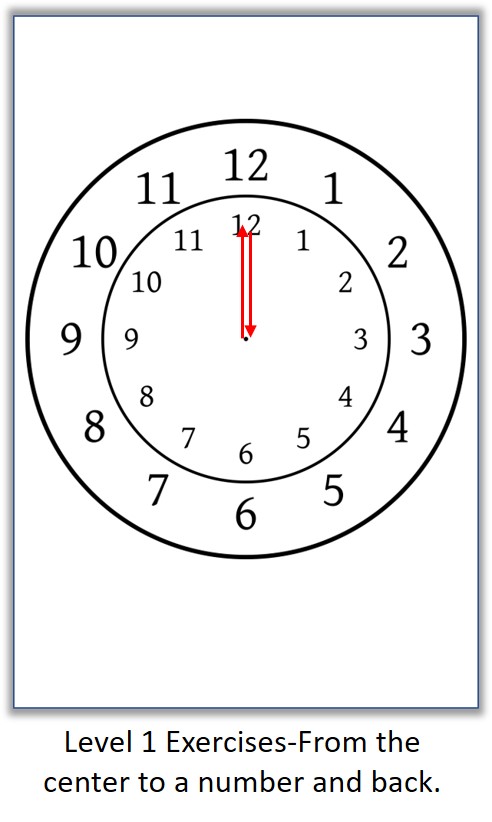
For this exercise, we’ll be using the small clock face inside the bigger one. The first exercise is moving the LASER point from the center point to the 12 and back (as shown to the left). Do this very slowly. Now add in the 9, 3, and 6. So from the center to 12, back to center, to 9 and then back to center, then to the 3 and back to center, then to the 6 and back to center.
Again, these should be slow and controlled movements. In particular, as with the entire program, watch the LASER point and make it move smoothly and in straight lines from target to target. If it shakes back and forth or doesn’t initially move in a straight line that’s fine. But your goal is smooth movement in straight lines from point to point.
Start with what you can tolerate up to 10 reps of going to 12, 9, 3, and 6. One rep is defined as 12, 9, 3, and 6. If this is difficult for you, then you may need to stay at this level for a week or more to get to 10 reps. If it’s easy, then for day 2 or 3 move onto level 2.
This is a good place to realize that you need to listen to your body VERY CAREFULLY with this program. If you have any flare-up or you feel yourself “go out” then STOP. In that case, perform fewer reps next time or move back to the easier level or exercise!
Level 1- CCI Exercise 2
For this exercise, start at the center point and then try 11, 1, 7, 5 in the way as described above (center, number, back to center). This is 10 reps. Initially just perform L1-Ex2 (Level 1, Exercise 2) alone for a few days. Then integrate L1-Ex1 + L1-Ex2 together (so 20 reps in total). You may want to stay with these first two exercises for the first week or move on more quickly if this is easy.
Level 1- CCI Exercise 3
For this exercise, start at the center point and then try 10, 2, 8, 4 in the way as described above (center, number, back to center). 10 reps.
Initially just perform L1-Ex3 alone but then quickly integrate L1-Ex1 + L1-Ex2 + L1-Ex 3 together (so 30 reps in total).
For week 2 at level 3, up the reps to 15 for all exercises (45 reps total). For week 3, up it to 20 reps for all exercises (60 reps total). Again, if you can move through these more quickly than that. great. If you need to go more slowly than described here, that’s fine as well.
Level 2 – Small Clock Circles
Level 2 – Exercise 1
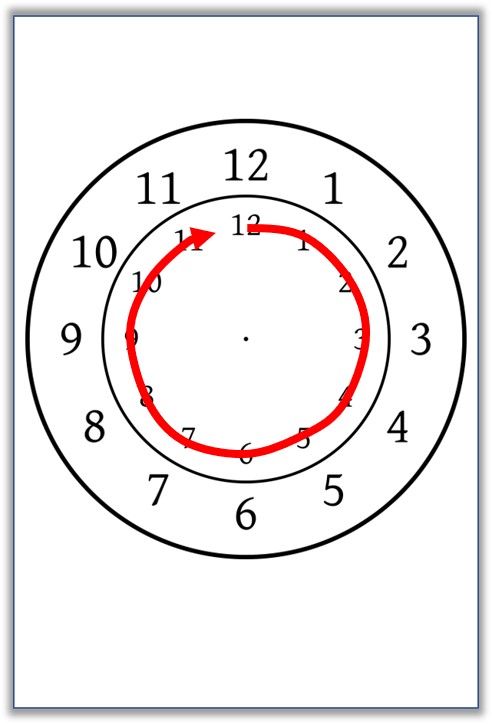
Here, start at the 12 and move the LASER pointer carefully around the clock in a circle all the way around. Hit every number starting at the 12 and going back to the 12 as shown to the left. On day 1 of this new level, do this for 10 reps, initially only this exercise (no level 1 exercises). On day 2, do 20 reps. On day 3 add back in your level 1 exercises in addition to the 20 reps of level 2, exercise 1. Keep with that program for the rest of that week. The next week add in 20 reps of the going in the opposite direction, starting at the 12 and going counter-clockwise, for a total of 40 reps of level 2 exercises.
Again, how many exercises from which levels you are able to do here depends on how much you can tolerate. Higher functioning patients may find that they can do all level 1 plus level 2 exercises easily. Other patients may need more time to integrate level 1 and two exercises.
Level 3 -The Big Clock
For level 3, you should repeat level 1 and level 2 using the big outer clock face. For lower functioning patients this may take the whole time periods described for those levels. For higher functioning patients this may only represent a week.
Level 4 – Upping the Movements by Pulling the Chair Closer
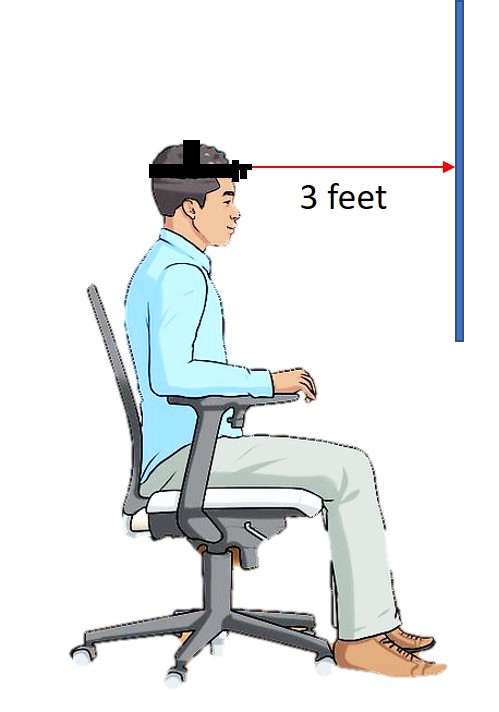
Now we’re going to make things harder by moving the chair closer to the wall. The distance between your head and the wall should be 3 feet. For level 4, if this is an easy jump for you, repeat level 3 using the big clock. If this is a harder jump with more flare-ups, then repeat levels 1 and 2 before going on to level 3. This level will require more head movement than levels 1-3, so go slowly and listen to your body.
Level 5 – Closer and Closer
For this level, move the chair so that your knees are touching the wall. This should be about 18 inches to two feet depending on the length of your legs. Again, as above, if this is tough, repeat levels 1 and 2 before going to level 3. If it’s easy, repeat level 3.
Level 6-90 Degree FOV Room Targets
Next, you want to begin hitting random targets around the room. In this case, make a list of the things that are within 90 degrees of your visual field (see image left). This is 45 degrees to the left and 45 degrees to the right. Make sure some are higher and some are lower and you have an equal number on both sides. Then write those targets down on a card and have someone randomly read them to you while you very slowly look at them and move your pointer on to them. As you get better at this level, you can increase the pace and then more quickly go between targets. Again, start slow and slowly increase your pace.
Try this for a week starting with 20 reps and working up by the end of 1-2 weeks to 40 reps. Again, if you can do this without flare-ups, then you may want to begin timing yourself to see how long it takes to get through the list and then trying to reduce that time as the days wear on. If this is difficult, then you may want to stay at this level longer and slowly up your pace. The goal of this level is to train your muscles to be able to react to the real world where you’re often forced to look at things in your environment on a moment’s notice.
Level 7-180 FOV Degree Room Targets
For this level, you increase your targets to 180 degrees (about 90 degrees to each side as shown). Do this just as described in level 6.
Level 8-Mazes
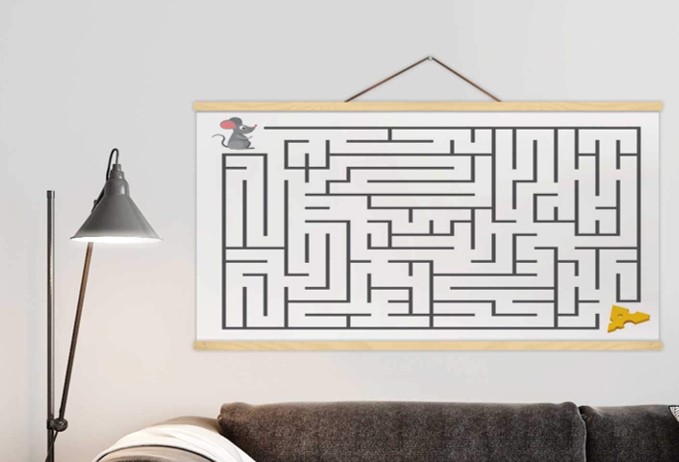
For this level, you can either make a maze on the other side of your clock poster board or buy one like the one I have shown here for $25 on Amazon. If you search google for maze patterns, there are also many you can find. In addition, the SenMorCor system I showed above has a maze poster that’s included. I’ve also created a maze pattern that you can get printed just like the clock faces above. You can find that here.
Here you begin at the beginning of the maze and move your LASER pointer though to the end. Having a few different ones to work with so you’re thinking and moving your head at the same time is a good idea. Start with 20 reps at 3 and 5 feet, moving very slowly to start and then gradually increase your pace. You can also time yourself so that you can improve your times over a few weeks.
Level 9-Gyrostim

This last level is a machine that can be found in clinics that focus on brain injury and vestibular rehab as well as athletic performance. It’s called a Gyrostim and it has many levels from very light to really intense. You sit in a chair that moves and then point a LASER (with your hand) at various targets. You could enter this type of program commonly after level 4 or 5 or later. I’m unsure how many of these machines are deployed and in what locations, but the company that’s linked above should know.
The upshot? That’s the post-PICL rehab program for patients wanting to know how to best do CCI exercises. Again, remember, a strong set of upper neck muscles is key to get the most out of PICL. In addition, without getting these atrophied muscles back online, there is no way to get close to 100% recovery.
